Greece in the summer is what most travel guides will show you, falsely leaving you with the impression that from November to April, Greece is not worth traveling to. But Greece is not all about summer and beaches — archeological sites, forests, mountains, caves, and cities make up a country where every season counts. Look for the time of year that is ideal for the type of activities you want to do, whether that’s sunning yourself on a non-crowded beach, visiting the Acropolis, or even attending Greece’s liveliest festivals. Here are the best times to visit Greece for every type of traveler.
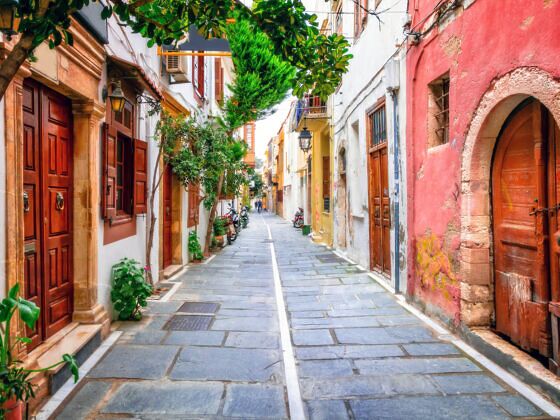
The Best Time To Visit Greece for Every Type of Traveler
- The best time to visit the Greek Islands
- The best time to visit Greece’s archaeological sites
- The best time to visit Greece for outdoors activities
- The best time to visit Greece for festivals
- The best time to visit Greece for delicious, seasonal food
The best time to visit the Greek Islands
The Cyclades islands — September
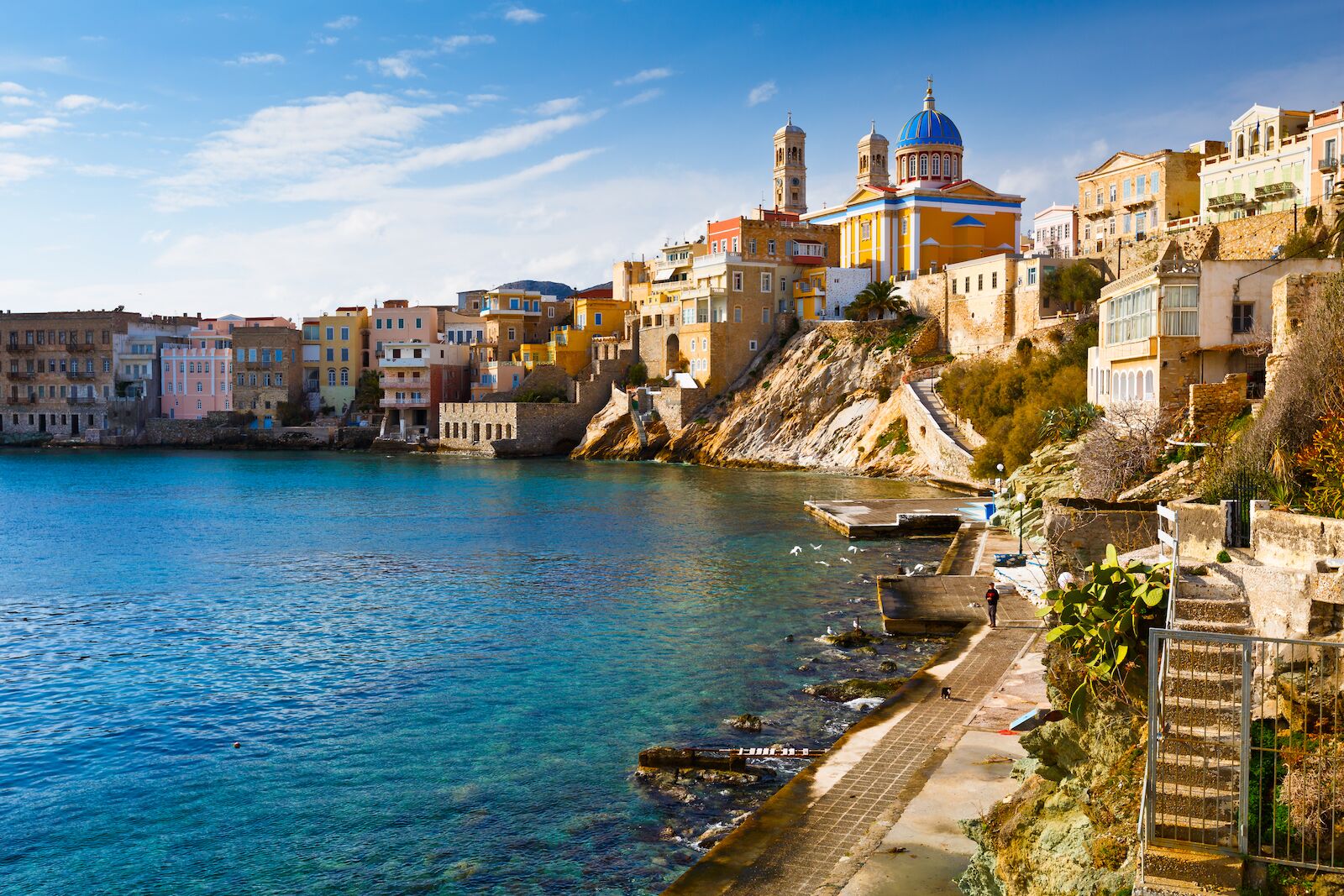
View of the island of Syros. Photo: Milan Gonda/Shutterstock
If you aspire to the white-and-blue glam of Mykonos and Santorini for your Greek vacation, you need to time it well so you get good weather and thin crowds. June, July, and August have the highest temperatures (average of 79°F) and close to zero rainy days, but you risk spending most of your time either searching for a spot on the beach to stretch your towel or a seat in a restaurant. On the other hand, if you visit during April or October, the strong winds, which are characteristic of the region, may blow away your beach dreams. The month of September is when you will find the balance between pleasant beach weather, a reasonable amount of tourists, and fair prices in one of Greece’s most sought-after regions. Now, if your availability is only during the high season, consider choosing between the equally beautiful but not-so-popular Cyclades islands of Tinos, Milos, Serifos, Amorgos, Folegandros, and Syros.
The Sporades islands — May through October
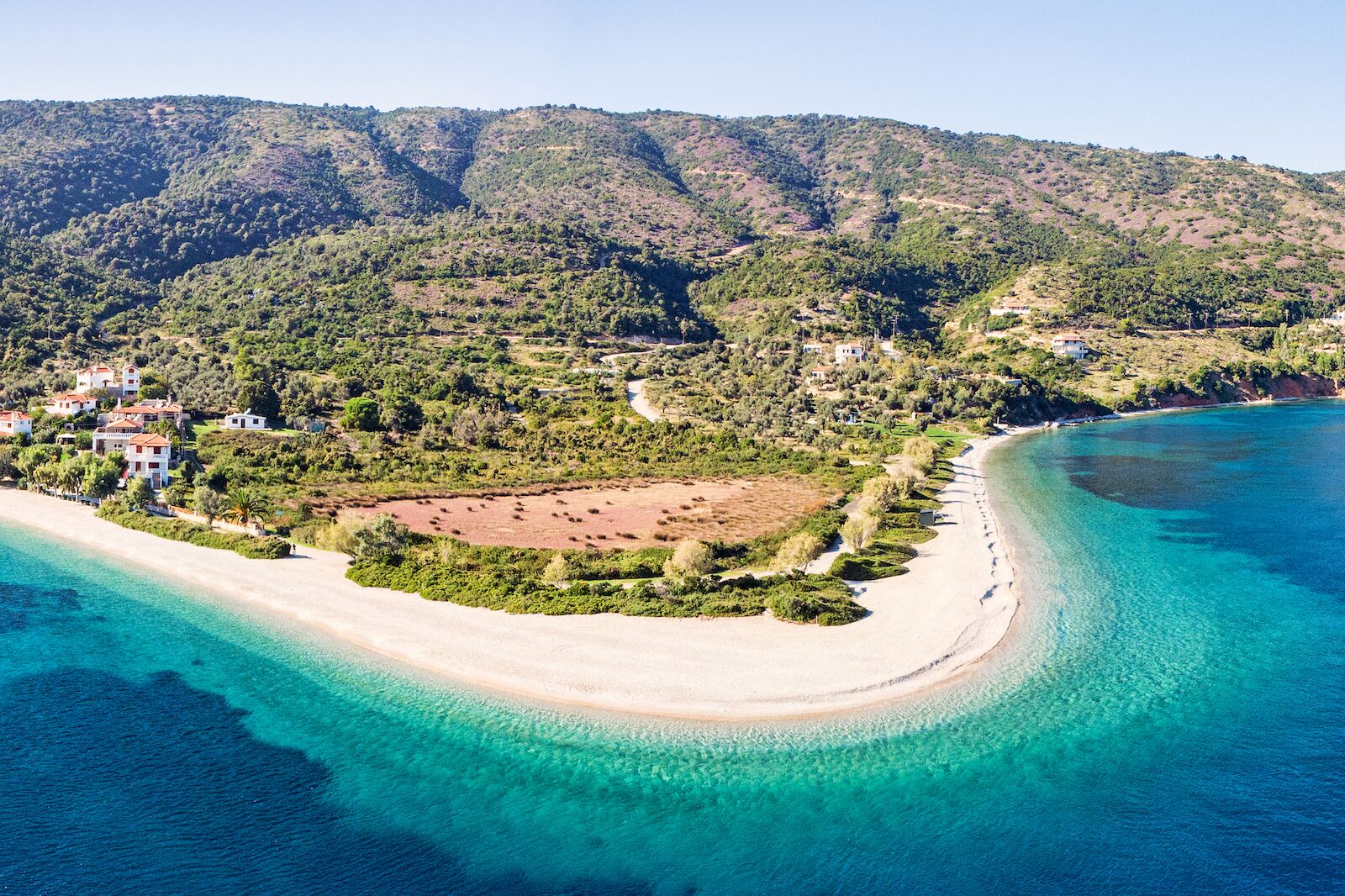
View of the island of Alonissos. Photo: Constantinos Iliopoulos/Shutterstock
The Sporades are the scattered islands of the Aegean Sea, and you probably know them from the Mamma Mia movie, shot in Skiathos and Skopelos islands. But the Sporades have a well-kept secret — Alonissos island — perfect for the nature-loving traveler. Besides the numerous hiking trails in the dense pine forests that often lead to magnificent beaches, Alonissos is home to the largest marine protected area in Europe, the Alonissos National Park of Northern Sporades, covering 226,500 hectares of terrestrial and marine habitats.
The best time of the year to visit the park is from May through October, when the sea is not rough so you have a better chance of spotting dolphins, the endangered Mediterranean monk seal, as well as some of the 100-plus bird species living there. If you are in Alonissos between June and August, visit the Underwater Museum and dive into the shipwreck of Peristera, a vessel dating back to the fifth century BCE. Recreational divers can contact the museum to organize a dive with a crew and see up close the thousands of wine amphoras that the ancient ship was transporting before it sank.
The Dodecanese islands — April and May
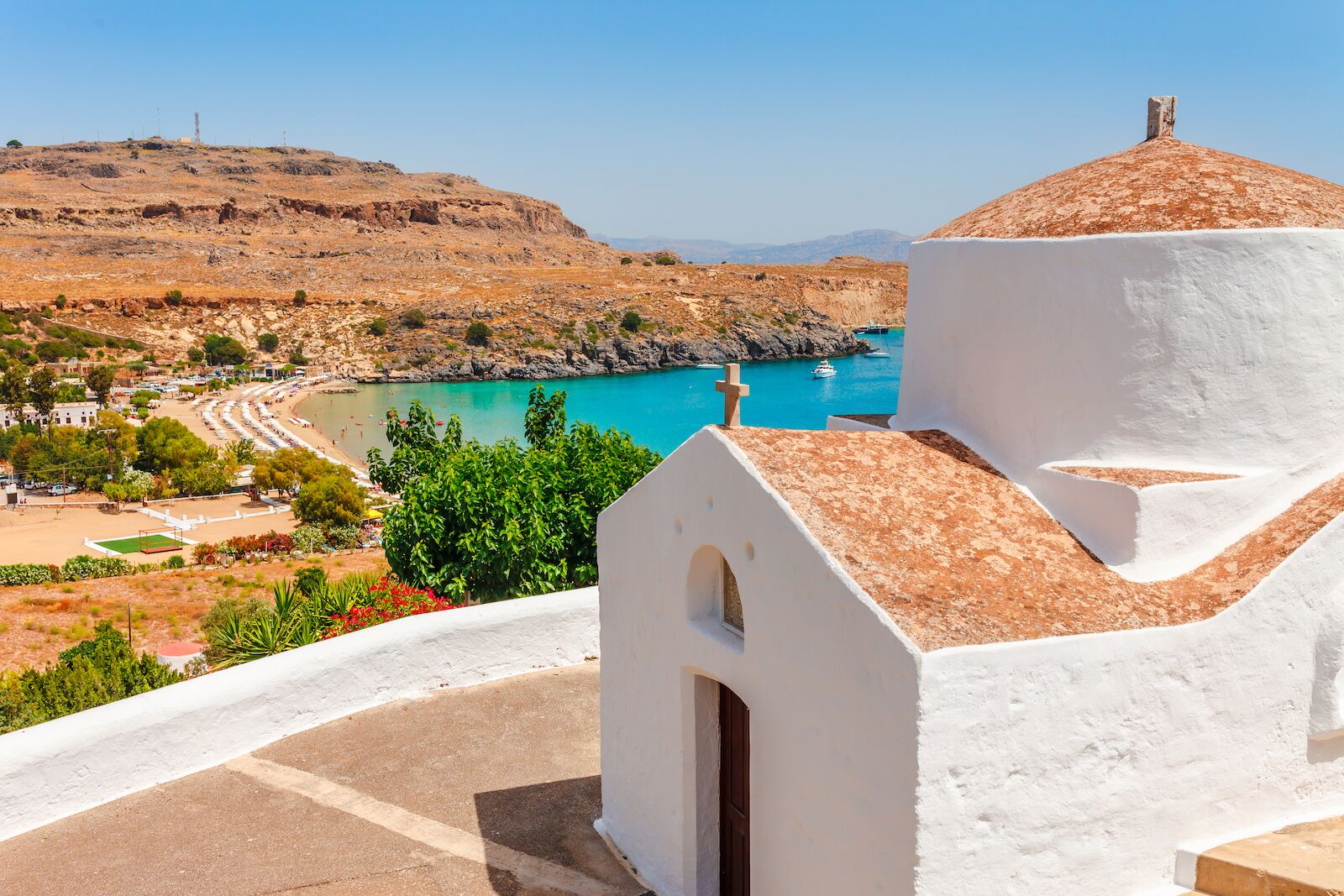
View of the island of Rhodes. Photo: Oleg_P/Shutterstock
Rhodes island is the capital of The Dodecanese (meaning 12 islands) complex, and every year, between April and August, over one and a half million people visit it. The town of Rhodes is the best-preserved medieval settlement in the world and is a UNESCO World Heritage site.
Visit Rhodes, and the island of Patmos, during Greek Easter (in April or May), which is celebrated on the first Sunday after the full moon following the spring equinox. Both islands have a strong religious tradition, especially Patmos, where, according to folk tales, John the Evangelist wrote his gospels inside a cave, which is also a UNESCO World Heritage site. Easter is Greece’s biggest celebration, and the week preceding it is filled with special customs and various traditional meals. The weather is usually pleasant in spring, and even better, you will have iconic Dodecanese beaches such as St Paul’s Bay (Rhodes) and Lampis (Patmos), all to yourself. Even the trendy resort town of Faliraki (Rhodes) is a serene vacation spot during April and May.
Crete — May and June
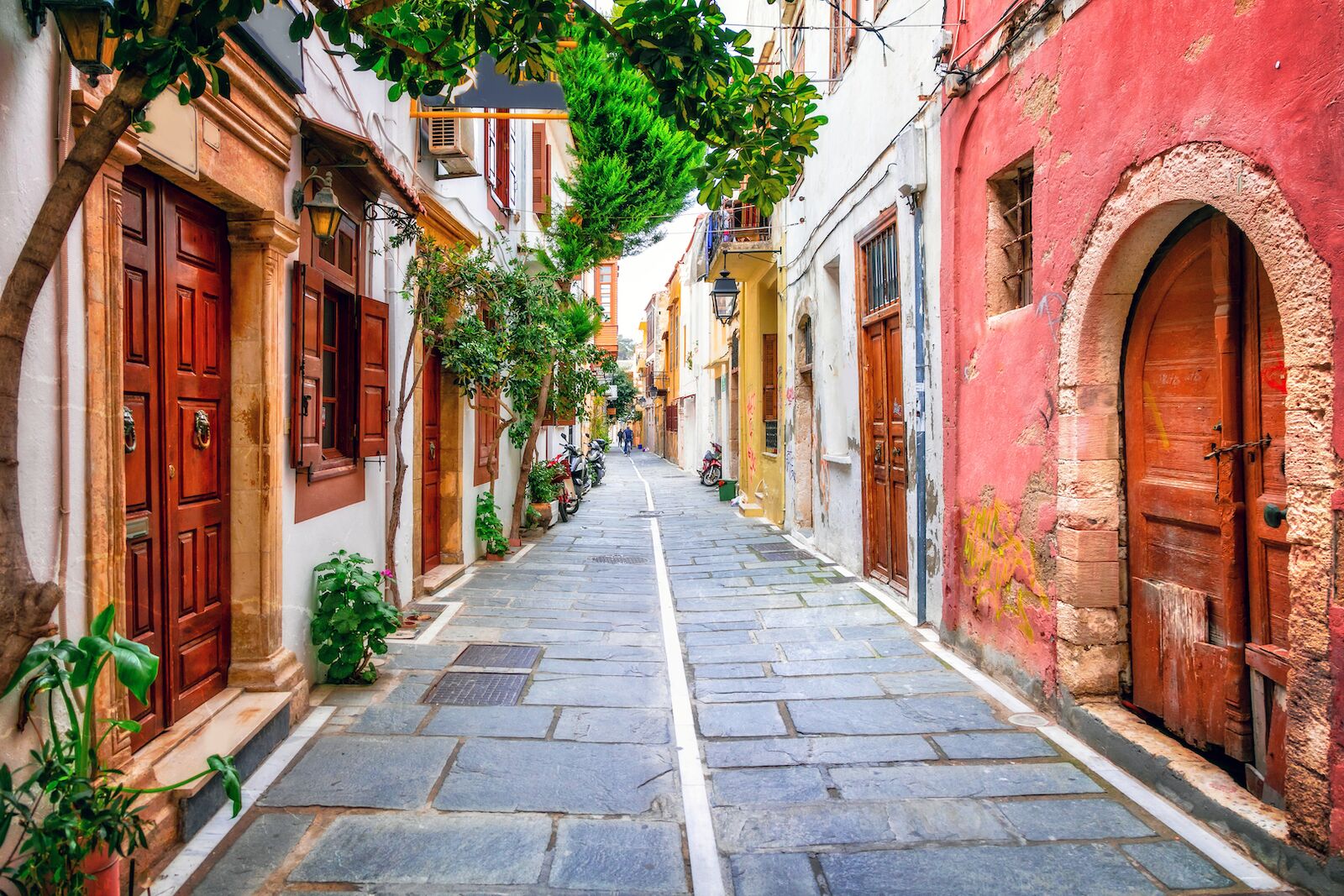
A street in Crete. Photo: leoks/Shutterstock
Crete is the sunniest place in Greece with less than 90 cloudy days per year and winter daytime temperatures at 59°F or above.
If you want to swim and hike, May and June are the best months to visit Crete, as the weather is warm (highs between 75°F and 82°F and lows between 59°F and 64°F). Also, the sea temperatures have just started to rise (from 61°F in the winter months to 69°F). It is also the best time of the year to see the fauna and flora of the Samaria Gorge in the White Mountains National Park come to life.
The bonus of visiting Crete during the high season (July and August) is that ferries and charter flights are operating at their highest frequency. But you’ll have to deal with a lot more tourists.
The Ionian Islands — early June and late August
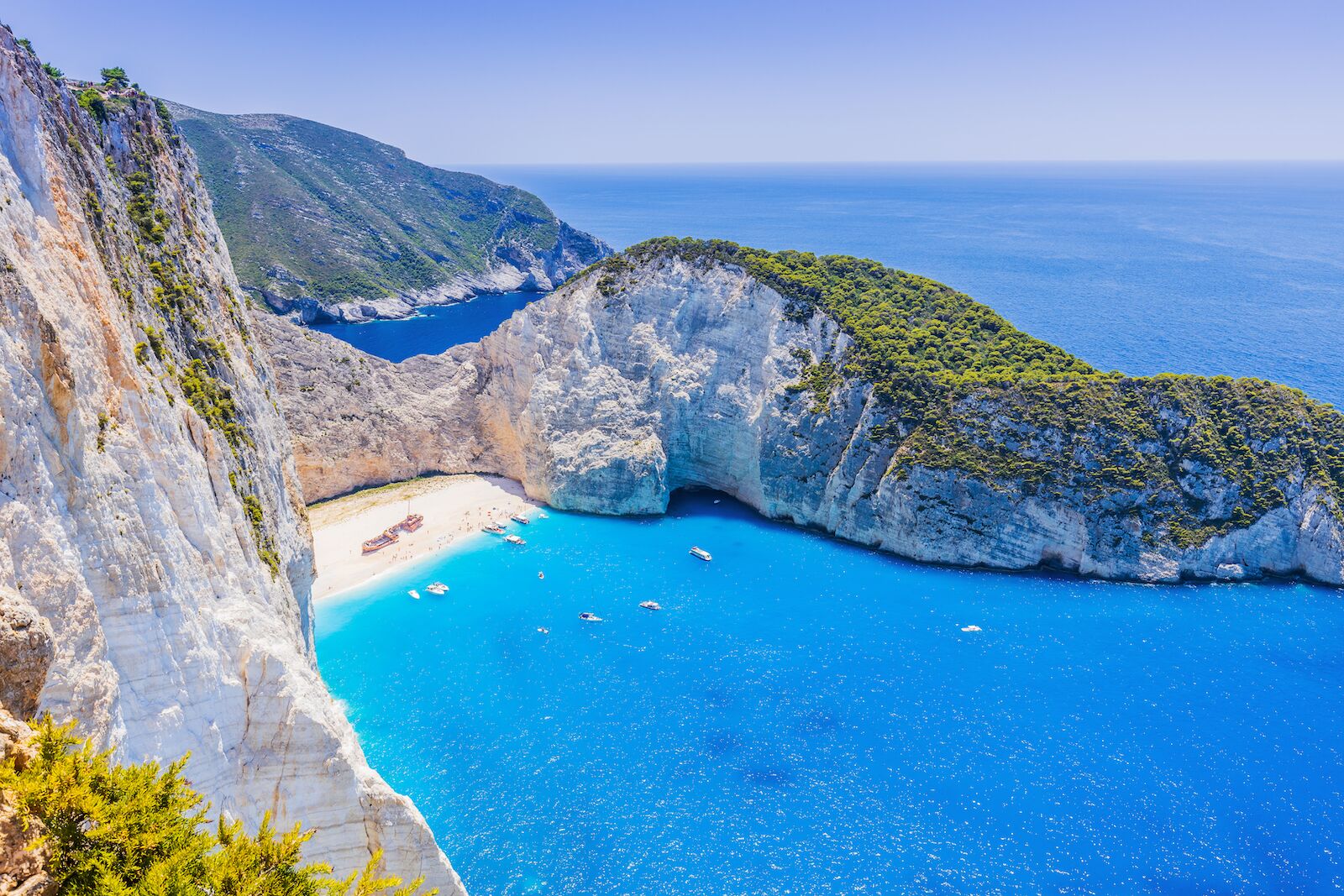
Navagio Beach (also known as Shipwreck Beach) in Zakynthos. Photo: SCStock/Shutterstock
The Ionian Islands, or Eptanisa (meaning seven islands), are covered in lush pine forests, olive groves, and vineyards, and surrounded by turquoise waters. The islands’ elegant and colorful architecture and noble fortifications are the results of 400 years of Venetian rule. The climate of Eptanisa is warm (the average temperature in June, July, and August is 78°F), and even though you may experience a refreshing rain shower during these months, the region is shielded from cold winds.
If you want to set foot on the legendary Navagio Beach (also known as Shipwreck Beach) on Zakynthos or relax on Kefalonia’s Myrtos Beach, early June and late August are great times to escape the big crowds. Also, if you are on the island of Kefalonia on the 24th of August, don’t miss the celebrations in the scenic village of Assos. Through the night musicians play Venetian serenades from well-lit and decorated boats resembling gondolas.
The best time to visit Greece’s archaeological sites
Athens and the Peloponnese region: April and May or September and October
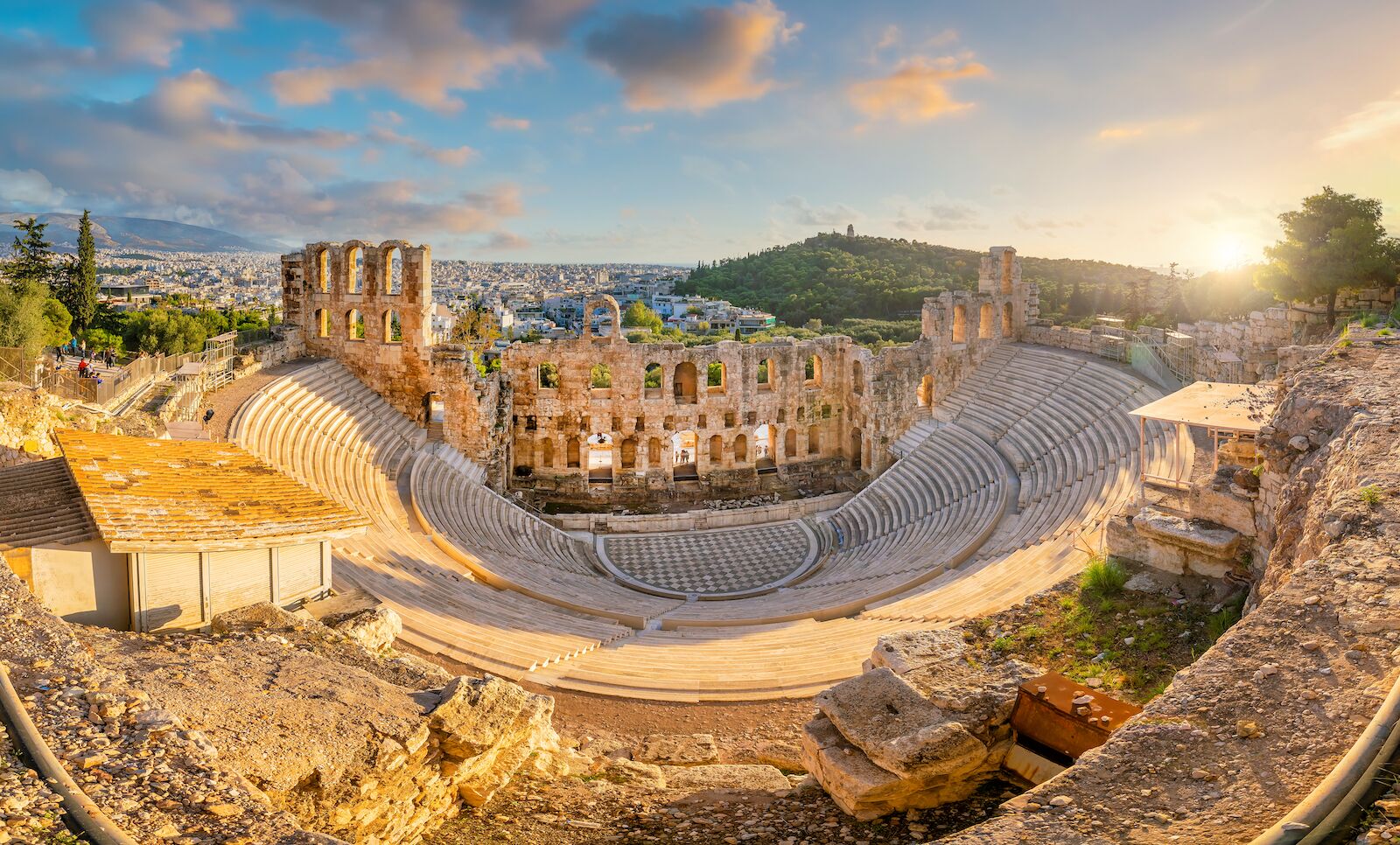
The Odeon of Herodes Atticus Roman theater at the Acropolis in Athens, Greece. Photo: f11photo/Shutterstock
Greece’s best archaeological sites are in Athens and the Peloponnese region. Visiting sites in the high season involves scorching temperatures and lengthy lines, so consider the cooler and less busy months of April and May or September and October for the outdoors sites. These are the times when the Greek mainland has lovely temperatures, and the summer crowds have either not yet arrived or have already dispersed. Also, during those months, the sites are applying the summer opening hours, which are considerably longer (typically from 8:00 AM to 8:00 PM) and more consistent. To avoid inconveniences, you should always consult the Ministry of Culture and Sports’ website for opening hours, ticket purchases, and combined or reduced tickets..
Thessaloniki: November

Photo: Aivita Arika/Shutterstock
The port city of Thessaloniki, opposite Mount Olympus, is best visited in November for its beautiful fall and winter landscape. The average temperature is 52°F with higher chances of rain, but you can shelter from the weather in any of the numerous bars and restaurants, traditional pastry shops, hammam baths, and fashion boutiques.
The city is home to the Archaeological Museum of Thessaloniki, which exhibits, among others, artifacts, findings from Macedonian tombs, a monumental Roman sarcophagus, and the Derveni Papyrus, the oldest surviving book in Europe. Also, Thessaloniki can be your base to visit the Royal Burial Cluster of Philip II, the father of Alexander the Great, as well as the surrounding archaeological sites and the Museum of the Royal Tombs.
The best time to visit Greece for outdoors activities
Hiking and climbing — May and June

Photo: Andrii Lutsyk/Shutterstock
Even though Greece’s climate is predominantly Mediterranean, there are several microclimates, including alpine weather conditions in the mountains. It is best to plan your hiking trips between May and June when there is a reduced likelihood of rain and thunderstorms — but remember to always check the weather in advance, no matter the season.
Iconic Greek hikes include:
- Mount Olympus, about 50 miles southwest from Greece’s second-largest city of Thessaloniki, has 52 peaks and more than 100 miles of trails of different difficulties. Some peaks are at 9,000 feet or above, and should only be conquered by highly experienced hikers.
- The Vikos–Aoos National Park in northwestern Greece, 37 miles north to the lake town of Ioannina
- The six-hour Samaria Gorge hike in the region of Chania in Crete
- The hike to the top of the sculptured rocks where the Meteora Monasteries sit, near the town of Kalabaka in central Greece
- The paths of the Pelion Peninsula and Mount Pelion in northern Greece
- The leisurely walk to the Monastery of Kaisariani in Athens
Windsurfing and kitesurfing — from June to August
The Mikri Vigla beach on the island of Naxos and the Nea Chrissi Akti beach on the island of Paros (both in the Cyclades) have ideal conditions for windsurfing and kitesurfing thanks to the consistent and steady northern winds that blow throughout the year. Similarly, Agios Ioannis beach on the Ionian island of Lefkada, Cape Drepano in the Peloponnese, and Schinia beach, 32 miles northeast of Athens, attract international windsurfers and kitesurfers.
Winds of seven to ten knots are strong enough for beginners and lessons, so if you are experimenting with the sport, you should test your skills during the warm months between June and August. For expert windsurfers and kitesurfers, any time of the year is an option, as long as the winds are not stronger than 22 knots, which, in Greece, is the wind speed limit for water sports. Also, windsurfing and kitesurfing are not permitted within a distance of fewer than 660 feet from swimmers, boats, rocky islets, and other obstacles.
The best time to visit Greece for festivals
Apokria — February or March, depending on Easter
This three-week carnival precedes Lent (40 days before Easter.) On the last Sunday of Apokria, big cities such as Athens, Patra, Grevena, and Rethymno hold the wildest street parties of the year. The night ends with the burning of the Carnival King — a papier-mâché structure that satires a public figure. The morning after, the fasting period starts, and families head to nearby hills for seafood picnics and the traditional flying of colorful kites.
Greek Easter — April or May, depending on the spring equinox

Photo: Alexandros Michailidis/Shutterstock
Greek Easter traditions vary from one region to another. Still, some customs are common throughout the country, like dyeing eggs, baking tsoureki (a sweet bread made of flour, eggs, butter, milk, and sugar), and roasting lamb. If you are in Greece during the Holy Week, the week preceding Easter Sunday, you should experience the Saturday night mass taking place even in the most remote churches of Greece. At midnight, the lights in the churches go out and the eternal light that has traveled from Jerusalem is passed on from the priests to the congregation to light everyone’s white candles. The feast begins straight after with the magiritsa soup, made of lamb intestines, and at dawn, the spits and grills for the lamb are set, and the charcoal set alight — even on the balconies and rooftops of the big cities.
Athens Epidaurus Festival — from June to September

The ancient theater of Epidaurus in Greece. Photo: Jean-Marc Pierard/Shutterstock
The Athens Epidaurus Festival is an annual celebration of ancient Greek theater and contemporary art. The festival is primarily held at the Odeon of Herodes Atticus in Athens and the Theatre of Epidaurus, 17 miles away from the scenic town of Nafplio.
The best time to visit Greece for delicious, seasonal food
Fresh fruits and vegetables — from May to September
If your diet is heavily based on fresh fruits and veggies, and you prefer smoothies over coffee, visit the street produce markets that take place weekly in just about every town and neighborhood in Greece. The markets operate from 7:00 AM to 3:00 PM and the best time of the year for an abundance of produce (think juicy watermelons, white peaches, ripe figs, organic strawberries, etc.) is from May to September.
Seafood — all year round
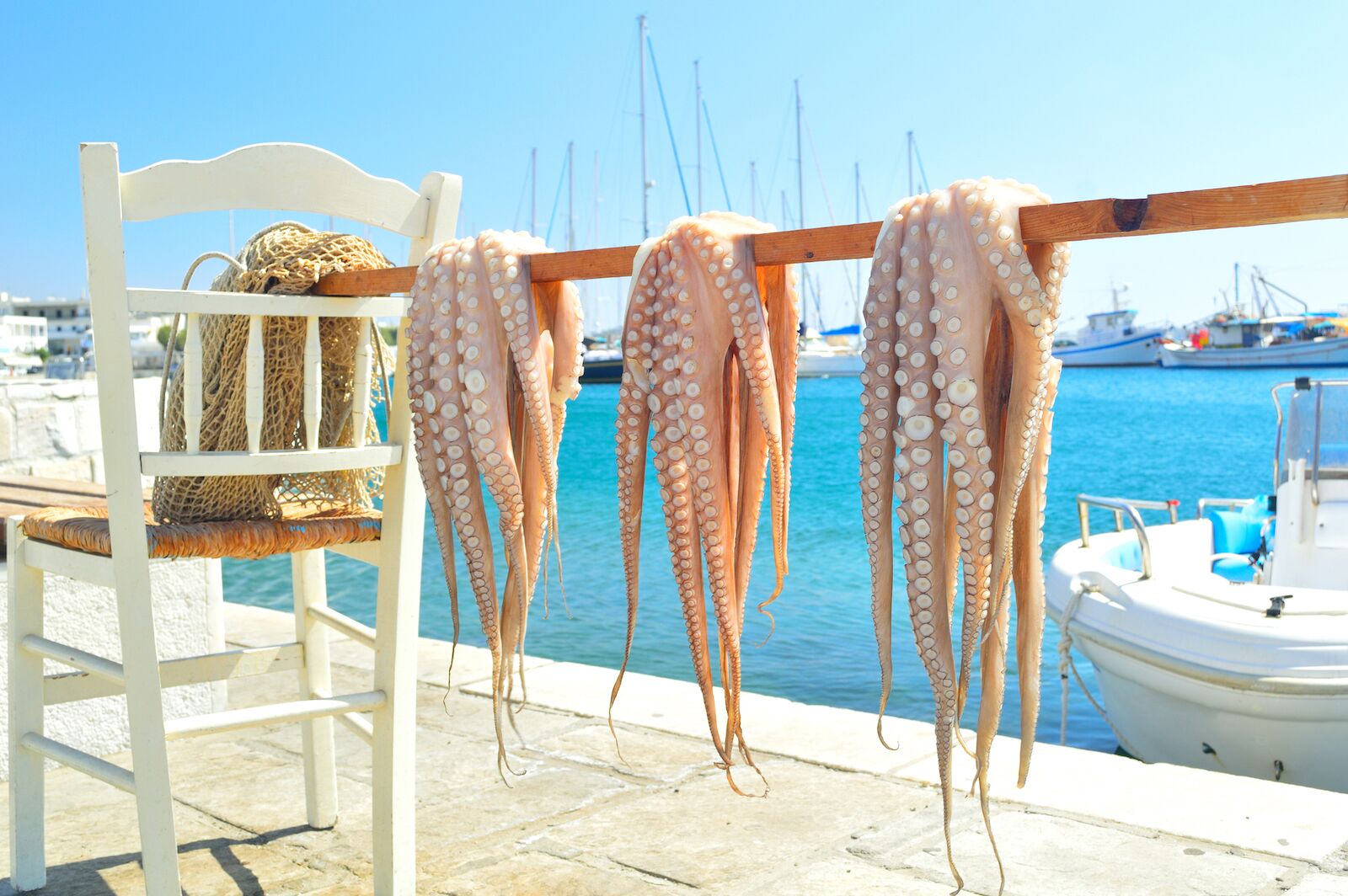
Photo: Aetherial Images/Shutterstock
The Greek eat a lot of seafood. If you want to enjoy a fresh octopus dish, order it between January and May; for mussels, lobster, and shrimps, the best time is mid-summer; for calamari and big fish such as white sea bream and white grouper, December and January is the time to indulge; and oysters are at their best February.